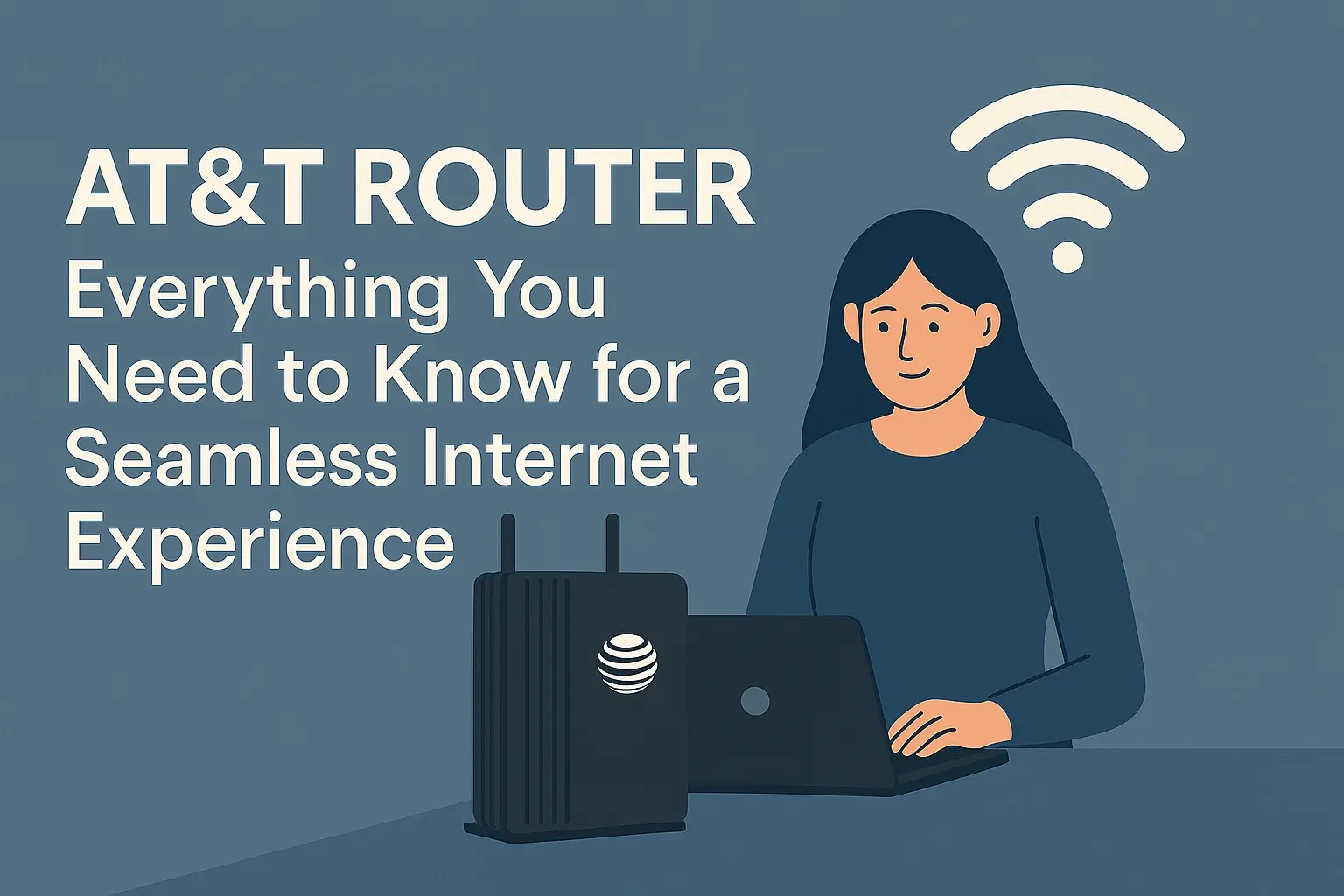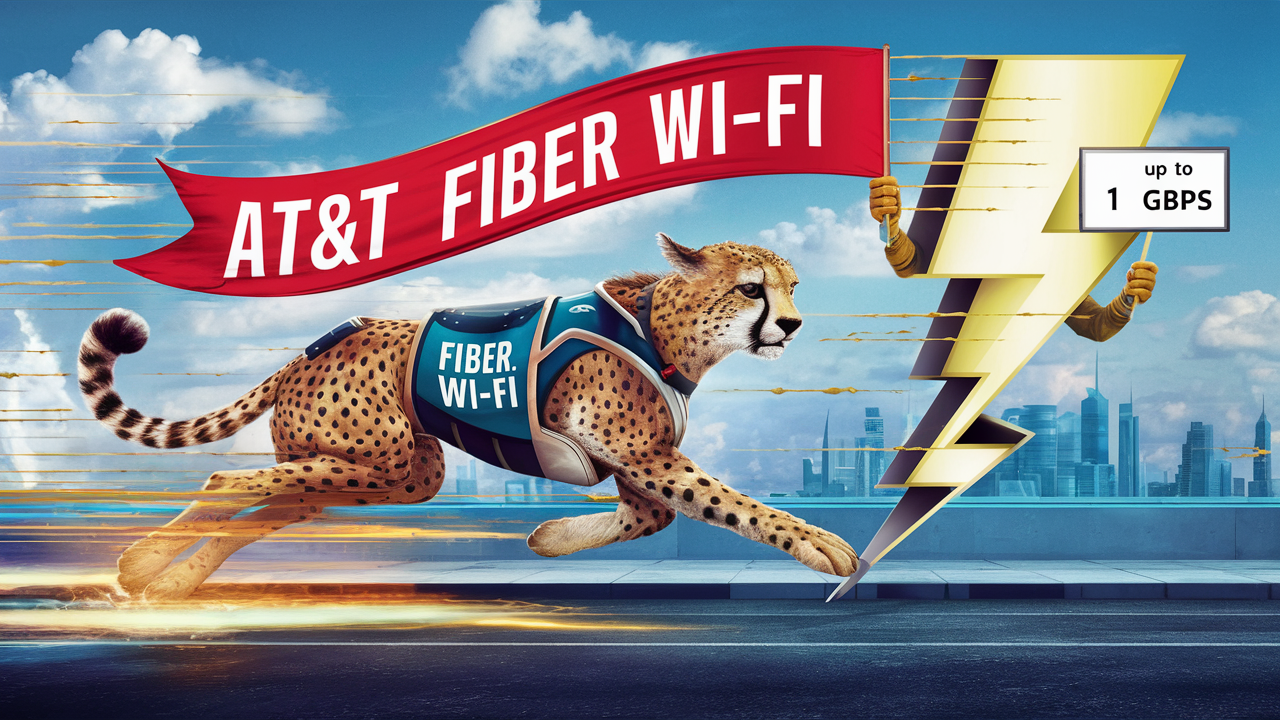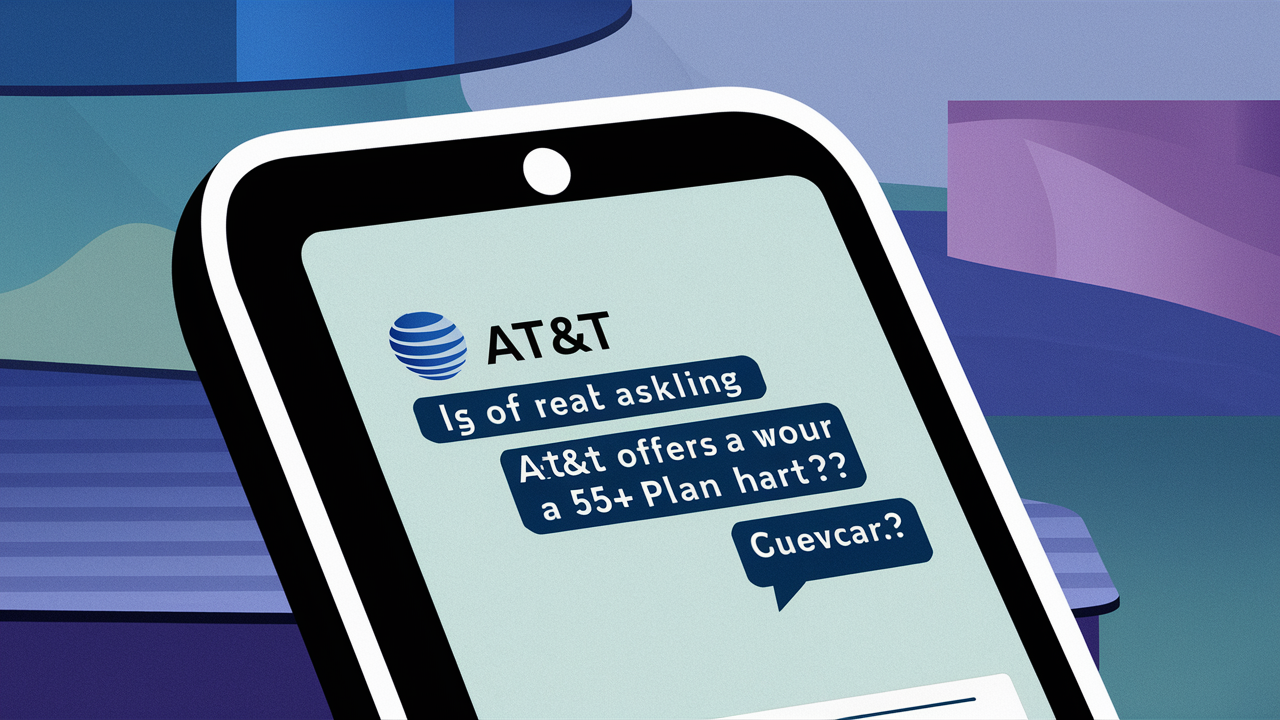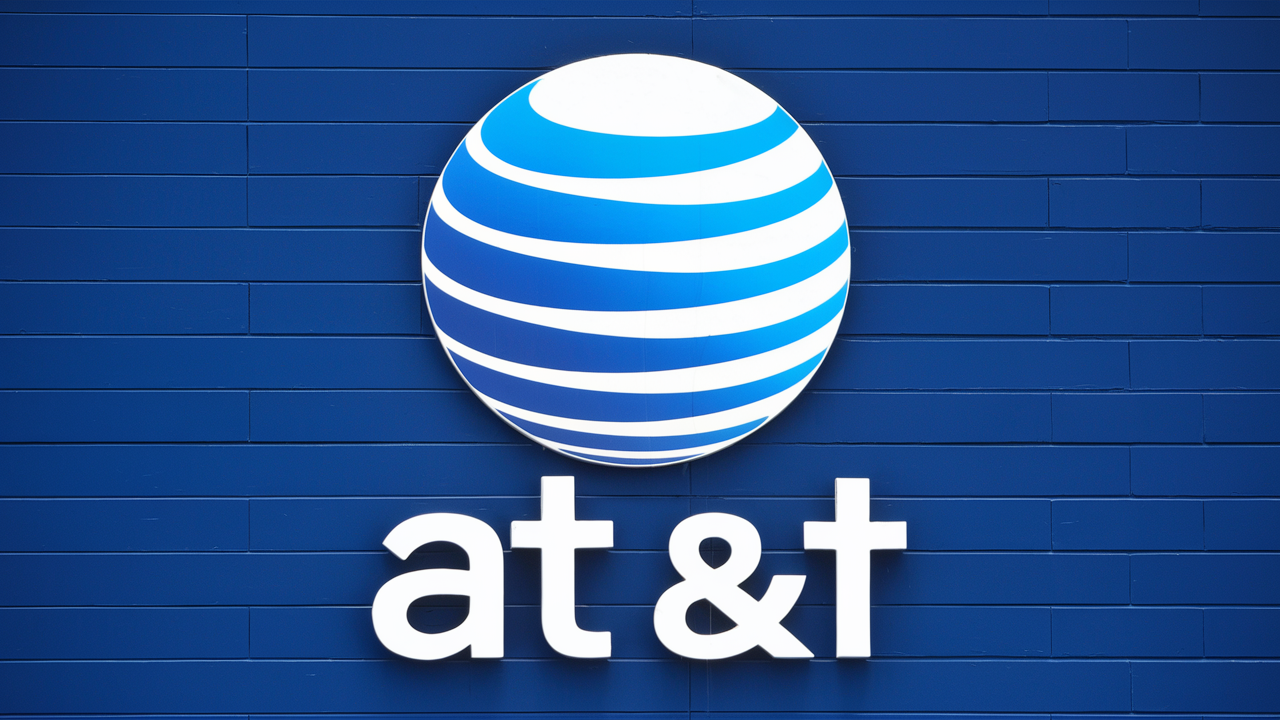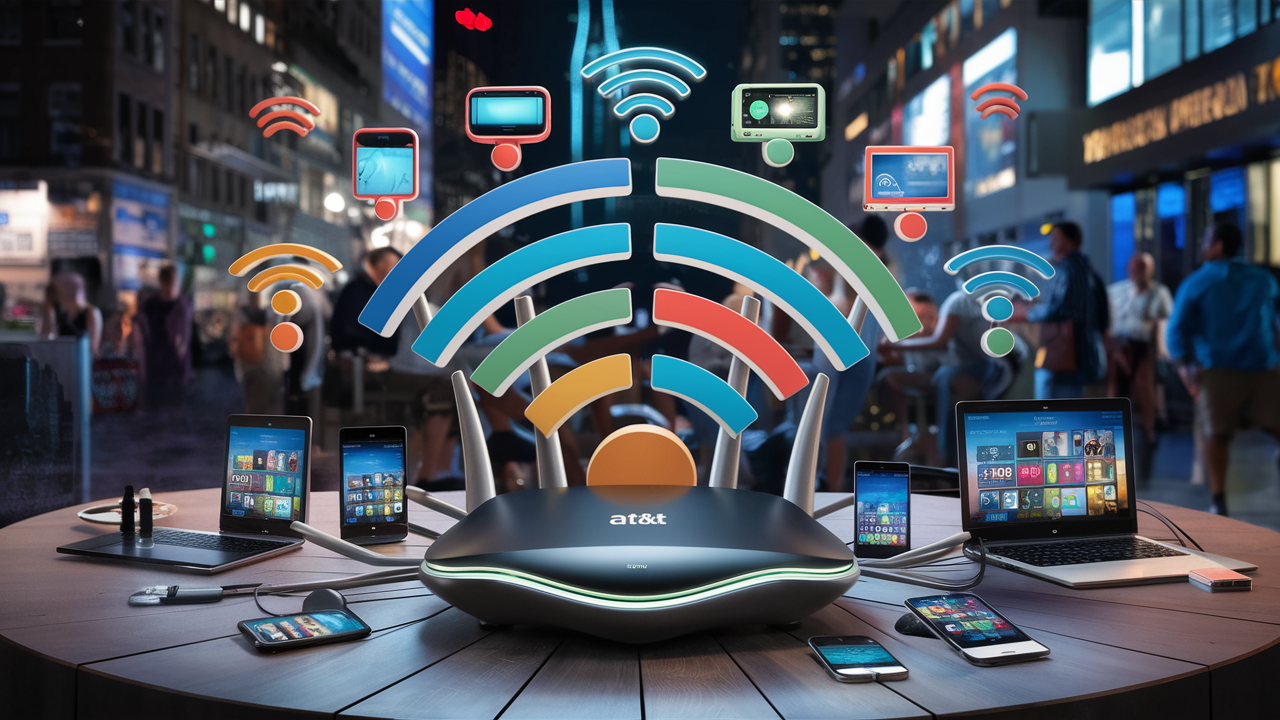
Introduction
In today’s connected world, a reliable and fast WiFi connection is essential for everything from remote work to streaming, gaming, and smart home management. AT&T, one of the largest telecommunications providers in the United States, offers multiple internet services that provide WiFi: AT&T Fiber, AT&T DSL, and AT&T Internet Air. But is AT&T good for WiFi? The answer depends on the service available in your area, your internet needs, and factors like speed, reliability, and cost.
Understanding AT&T’s Internet Services
AT&T provides three primary internet services that deliver WiFi to your home or business:
-
AT&T Fiber: A fiber-optic internet service offering high-speed, symmetrical connections (equal download and upload speeds). It’s known for its reliability and unlimited data, making it ideal for heavy internet users.
-
AT&T DSL: A digital subscriber line service that uses copper telephone lines. It’s widely available but offers slower speeds and often includes data caps, limiting its suitability for modern WiFi demands.
-
AT&T Internet Air: A 5G fixed wireless service that uses AT&T’s cellular network to provide internet. It’s designed for areas without wired connections, offering a plug-and-play solution with variable performance.
Each service comes with a WiFi gateway or hub that enables wireless connectivity for multiple devices. The quality of your WiFi experience depends on the underlying internet service, the equipment provided, and factors like home size and network congestion.
AT&T Fiber: The Gold Standard for WiFi
AT&T Fiber is widely regarded as one of the best internet services for WiFi, thanks to its high speeds, reliability, and advanced equipment. It’s the top choice for households or businesses with demanding internet needs.
Speed and Performance
AT&T Fiber offers plans with speeds ranging from 300 Mbps to 5 Gbps, with symmetrical upload and download speeds. This is a significant advantage for WiFi users, as upload speeds are critical for activities like video conferencing, cloud backups, and online gaming. For example:
-
Internet 300: 300 Mbps, suitable for small households with 5–10 devices.
-
Internet 1000: 1 Gbps, ideal for large households or heavy users.
-
Internet 5000: 5 Gbps, perfect for businesses or tech enthusiasts with multiple high-bandwidth devices.
These speeds ensure smooth WiFi performance, even when multiple devices are streaming 4K content, gaming, or downloading large files simultaneously. According to Ookla data from 2024, AT&T was named the nation’s fastest ISP, highlighting its superior performance.
Reliability
Fiber-optic connections are highly reliable, with minimal interference and a 99% uptime rate. In the 2025 American Customer Satisfaction Index (ACSI), AT&T Fiber scored 78/100, surpassing the fiber ISP average of 75 and topping competitors. This reliability translates to consistent WiFi performance, even during peak usage times when other services might slow down.
WiFi Equipment
AT&T provides the AT&T Wi-Fi Gateway with its fiber plans, which supports WiFi 6. This modern standard offers faster speeds, better performance in crowded environments, and improved battery life for connected devices. For larger homes (up to 5,000 square feet), AT&T offers mesh extenders for $10/month, ensuring comprehensive WiFi coverage. The Smart Home Manager app allows users to manage their WiFi network, set up guest networks, prioritize devices, and monitor connectivity, enhancing the overall experience.
User Experiences
Customers frequently praise AT&T Fiber for its WiFi performance. A Reddit user described their connection as “literally rock solid,” with only two minor outages over several years. Another user highlighted the ease of setup and consistent speeds across their home, though some noted that larger homes may require extenders for full coverage. The Smart Home Manager app was also praised for its user-friendly interface and troubleshooting capabilities, such as automatically diagnosing and resolving router issues.
Limitations
The main limitation of AT&T Fiber is its availability, currently limited to about 21 million customers in over 100 major U.S. cities. If Fiber isn’t available in your area, you’ll need to consider other AT&T services or competitors.
AT&T Internet Air: A Wireless Alternative
AT&T Internet Air is a 5G-based fixed wireless service designed for areas where fiber or cable isn’t available. It offers a convenient, no-contract option with included equipment, but its WiFi performance varies based on location and network conditions.
Speed and Performance
AT&T advertises Internet Air speeds of up to 225 Mbps download and 30 Mbps upload. However, real-world performance can be inconsistent. A PCMag review reported download speeds ranging from 1 Mbps to 289 Mbps, with an average of 75 Mbps, and upload speeds averaging 8 Mbps. This variability can impact WiFi performance, particularly for high-bandwidth tasks like 4K streaming or gaming. Internet Air is best suited for moderate users who need reliable browsing, emailing, or HD streaming on a few devices.
Reliability
Internet Air provides a consistent connection in areas with strong 5G coverage, but its reliability depends on factors like distance from cell towers, network congestion, and physical obstructions. Unlike fiber, which is immune to external interference, Internet Air may experience slowdowns during peak times. A CNET review noted that while it meets FCC benchmarks (100 Mbps download, 20 Mbps upload), it’s not consistently fast enough for heavy users.
WiFi Equipment
Internet Air includes the AT&T All-Fi Hub, which supports WiFi 6, ensuring compatibility with modern devices. However, the WiFi performance is limited by the 5G connection’s speed and stability. For larger homes, additional extenders may be needed, though AT&T’s mesh solutions are primarily marketed for fiber plans.
User Experiences
Reviews for Internet Air are mixed. Some users appreciate the easy setup and lack of contracts, with one forum post noting it’s “30 bucks a month cheaper” than cable alternatives and works during power outages. However, others, like a CNET tester, found it insufficient for large downloads or uploads, citing slow speeds in the evenings. It’s a viable option for rural areas or those without wired connections, but performance varies widely.
Limitations
Internet Air has a 350 GB monthly data cap, which may limit heavy users. Its performance is also location-dependent, making it less reliable than fiber. If you’re in an area with weak 5G coverage, WiFi performance may suffer.
AT&T DSL: An Aging Option
AT&T DSL uses copper telephone lines to deliver internet and is the company’s oldest service. While widely available, it’s being phased out by 2029 due to its limitations.
Speed and Performance
DSL offers speeds from 10 Mbps to 100 Mbps, with upload speeds typically much lower (1–20 Mbps). These speeds are adequate for basic tasks like browsing, emailing, or SD streaming, but struggle with modern demands like 4K streaming, gaming, or multiple devices. The slow upload speeds make DSL less suitable for video calls or cloud-based work.
Reliability
DSL is less reliable than fiber or fixed wireless, as copper lines are susceptible to interference and degradation over distance. Data caps (150 GB or 1.5 TB monthly) further limit its appeal, with overage fees of $10 per 50 GB. This can restrict WiFi usage for heavy internet users.
WiFi Equipment
AT&T provides a modem/router combo for DSL, but it often uses older WiFi standards, limiting performance compared to the WiFi 6 gateways offered with Fiber and Internet Air. This can result in weaker signals and slower speeds, especially in homes with many devices.
User Experiences
DSL users often report it’s sufficient for light use but inadequate for modern needs. A Quora post mentioned frequent dropouts and slow speeds with multiple users, making it less ideal for WiFi-heavy households. With AT&T phasing out DSL, it’s not a long-term solution.
Limitations
DSL’s slow speeds, data caps, and outdated technology make it the least desirable option for WiFi. It’s only recommended if no other services are available.
Pricing Comparison
Pricing is a key factor when evaluating AT&T for WiFi. Here’s a breakdown of costs:
|
Service |
Starting Price |
Speeds |
Data Caps |
Notes |
|---|---|---|---|---|
|
AT&T Fiber |
$55/month |
300 Mbps–5 Gbps |
None |
Includes WiFi 6 gateway, no contracts |
|
Internet Air |
$55/month |
Up to 225 Mbps |
350 GB/month |
Includes All-Fi Hub, no contracts |
|
DSL |
$40/month |
10–100 Mbps |
150 GB–1.5 TB |
May require modem rental, overage fees |
AT&T offers promotional discounts, such as 20% off when bundling with an eligible?? An
Eligible AT&T wireless plan. Fiber and Internet Air include equipment, while DSL may incur additional modem rental fees. These prices reflect standard rates as of August 2025, but promotions may vary.
Availability and How to Check
AT&T’s services vary by location:
-
AT&T Fiber: Available to ~21 million customers in over 100 U.S. cities, with plans to double coverage by 2030.
-
AT&T DSL: Covers ~28 million locations across 22 states, but will be discontinued by 2029.
-
AT&T Internet Air: Available in select areas with strong 5G coverage, targeting rural or underserved regions.
To check availability, visit att.com/internet/availability and enter your address. If Fiber isn’t available, consider Internet Air or DSL, or explore competitors like Verizon Fios or Xfinity.
Comparison with Other Providers
To assess AT&T’s WiFi performance, let’s compare it with major competitors:
|
Provider |
Type |
Speeds |
Pricing |
Data Caps |
Reliability |
|---|---|---|---|---|---|
|
AT&T Fiber |
Fiber |
300 Mbps–5 Gbps |
$55–$180/month |
None |
High |
|
Fiber |
300–940 Mbps |
$49.99–$99.99/month |
None |
High |
|
|
Xfinity |
Cable |
75 Mbps–6 Gbps |
$20–$300/month |
1.2 TB/month |
Good, varies |
|
T-Mobile Home |
5G Wireless |
Up to 245 Mbps |
$30–$50/month |
None |
Varies by location |
AT&T Fiber matches Verizon Fios in speed and reliability, making it excellent for WiFi. Xfinity’s cable internet is widely available but may slow down during peak times due to shared bandwidth. T-Mobile Home Internet, like AT&T Internet Air, offers variable performance based on 5G coverage.
Optimizing Your AT&T WiFi Experience
To maximize WiFi performance with AT&T:
-
Router Placement: Place the gateway centrally, avoiding walls or metal objects.
-
Mesh Extenders: Use AT&T’s extenders ($10/month) or third-party mesh systems for larger homes.
-
Security: Enable WPA3 encryption and use AT&T ActiveArmor for cybersecurity.
-
Smart Home Manager App: Manage your network, set parental controls, and prioritize devices.
User Experiences
-
Fiber: A Reddit user called AT&T Fiber “hands-down the best internet service I’ve ever had,” citing seamless setup and minimal outages. Another noted coverage issues in larger homes, resolved with extenders.
-
Internet Air: A forum post praised its affordability and power outage resilience but noted inconsistent speeds. A CNET tester found it insufficient for heavy use.
-
DSL: Users report frequent dropouts and slow speeds, especially with multiple devices, making it less ideal for WiFi.
Conclusion
AT&T can be an excellent choice for WiFi, particularly if you have access to AT&T Fiber, which offers high speeds, reliability, and unlimited data, making it ideal for modern households. Internet Air is a decent alternative in areas without fiber, but its variable speeds may not suit heavy users. DSL, while widely available, is outdated and less suitable due to slow speeds and data caps. Check availability at att.com/internet/availability to see your options. For the best WiFi experience, prioritize Fiber if available; otherwise, compare Internet Air or DSL with competitors like Verizon Fios, Xfinity, or T-Mobile Home Internet based on your needs and budget.
FAQ
Q1: Is AT&T WiFi good for gaming?
A1: AT&T Fiber is excellent for gaming due to its high speeds and low latency. Internet Air may suffice for casual gaming, but can be unreliable for competitive play due to speed fluctuations.
Q2: Does AT&T WiFi have data caps?
A2: Fiber has no data caps. DSL has caps of 150 GB or 1.5 TB, with $10/50 GB overage fees. Internet Air has a 350 GB cap, but overage fees are unclear.
Q3: How does AT&T WiFi compare to other providers?
A3: AT&T Fiber rivals Verizon Fios for speed and reliability. DSL is slower than Xfinity’s cable internet, and Internet Air is comparable to T-Mobile Home Internet, with performance varying by location.
Q4: Can I use my router with AT&T internet?
A4: Yes, but you’ll need AT&T’s modem/gateway for the connection. A personal router can offer better coverage or features.
Q5: Is AT&T WiFi secure?
A5: AT&T gateways support WPA3 encryption and include ActiveArmor for cybersecurity, protecting against online threats.
Q6: What if I have poor WiFi coverage in my home?
A6: Use AT&T’s mesh extenders ($10/month) or third-party systems to improve coverage in larger homes.

